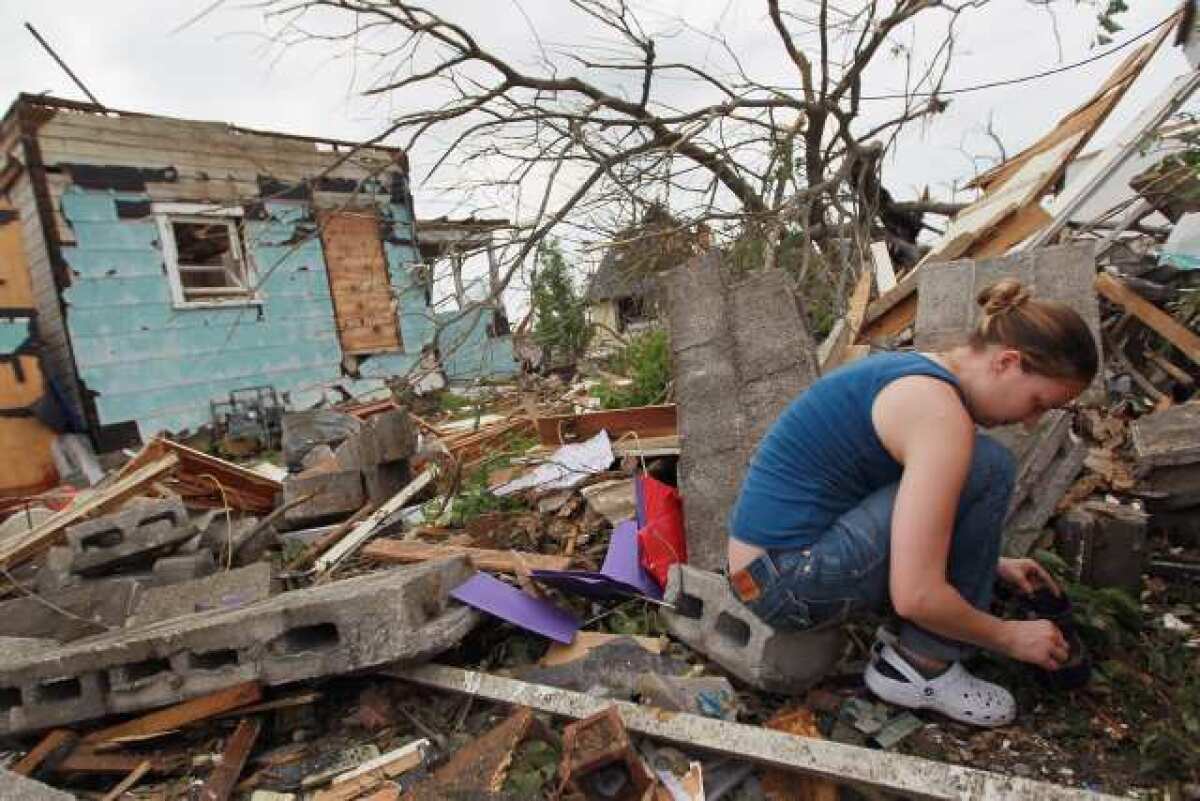Do people fail to respond to tornado warnings?

- Share via
The violent tornado that ravaged Joplin, Mo., killing at least 117, had hospital employees rushing to transport patients to safety at the last few minutes and forced others into refrigerators for shelter. There was 20 minutes of advance warning provided by the emergency sirens, so why did some appear to be caught off-guard?
While Hollywood’s portrayals of humans warned of impending natural disasters tend to show chaos and panic, scientists say that in real life, people tend to express disbelief instead.
“Research generally shows that folks are in denial that a tornado is going to harm them,” said William Donner, an environmental sociologist at Indiana University of Pennsylvania in Indiana, Pa. “Generally people don’t panic unless the threat is right at their doorstep.”
To understand the decision-making process that happens when tornado warnings are issued, Jenniffer Santos-Hernandez, currently a disaster researcher at Oak Ridge National Laboratory in Oak Ridge, Tenn., helped conduct a phone survey of more than 600 people in Oklahoma, Kansas, Minnesota, Illinois, Mississippi, Tennessee and Alabama, who lived in areas struck by tornadoes in 2008 and 2009. According to data she collected with then-colleagues at the University of Delaware’s Disaster Research Center, when asked whether they took any action to protect themselves, their families or their property, 59% said yes -- and 41% said no.
She also found that 40% said they took shelter after hearing a warning. But 11% looked for more information, 2% called others, 6% protected private goods -- and 5% continued doing what they were doing.
When asked whether they looked out a window to verify whether a tornado was coming, about 67% of respondents said they did.
That’s because people innately tend to look for confirmation that a tornado is actually happening, whether in the form of a phone call from family or friends, warnings from neighbors or, all too often, an urge to get a glimpse of the tornado in real time, said Jerry Brotzge, a senior research scientist at the University of Oklahoma in Norman, Okla.
“Once they have that secondary information, they’re much more likely to take shelter,” he said. But there are problems with that last option, Brotzge added. Waiting for a tornado to appear shaves precious minutes off of the warning time window (the average lead before a tornado touches down is about 13 minutes, according to the National Weather Service). If that tornado ends up touching down on your house, he said, it’ll be too late to react – and if it’s raining, he said, there’s it’s difficult to see a tornado coming until you’re practically in it.
Part of the issue might be that people don’t take warnings seriously. Because warnings can be issued to entire counties, it’s not always clear when a tornado is an immediate threat. And according to the National Weather Service, the 2007 false-alarm rate for tornado warnings, which measures the proportion of predicted events that did not occur, was 75%.
Santos-Hernandez added that many people in her survey could not describe the difference between a tornado watch and a tornado warning. A tornado watch means conditions are ripe for a twister to develop. But a warning means a tornado is imminent. Grasping that distinction is key to understanding when to be on the lookout for a tornado and when to find shelter immediately.
More answers will be available in this case once researchers gather more information -- such as, for example, how many people tried to take shelter, how many heard the warning, whether people were at home or in cars at the time the tornado hit.
“We’ll know a lot more in six months once we’ve digested the data,” Brotzge said. “We’re just now beginning to understand human behavior and response to warnings.”
Follow me on Twitter @LAT_aminakhan.
More to Read
Sign up for Essential California
The most important California stories and recommendations in your inbox every morning.
You may occasionally receive promotional content from the Los Angeles Times.














